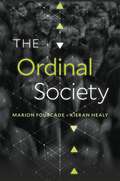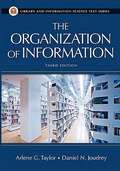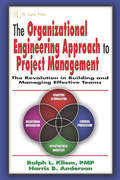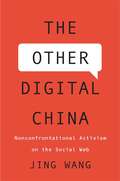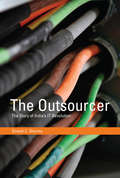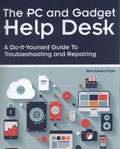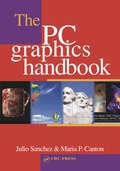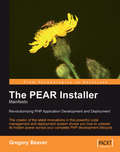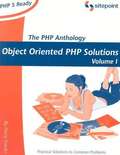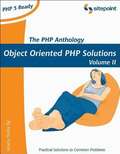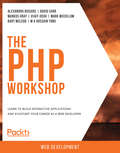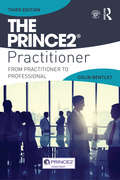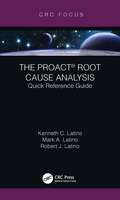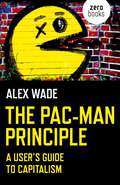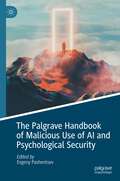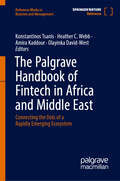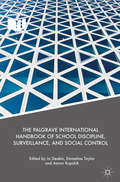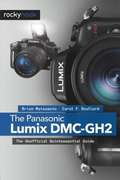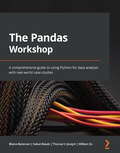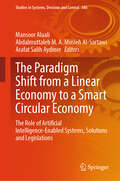- Table View
- List View
The Ordinal Society
by Marion Fourcade Kieran HealyA sweeping critique of how digital capitalism is reformatting our world.We now live in an “ordinal society.” Nearly every aspect of our lives is measured, ranked, and processed into discrete, standardized units of digital information. Marion Fourcade and Kieran Healy argue that technologies of information management, fueled by the abundance of personal data and the infrastructure of the internet, transform how we relate to ourselves and to each other through the market, the public sphere, and the state.The personal data we give in exchange for convenient tools like Gmail and Instagram provides the raw material for predictions about everything from our purchasing power to our character. The Ordinal Society shows how these algorithmic predictions influence people’s life chances and generate new forms of capital and social expectation: nobody wants to ride with an unrated cab driver anymore or rent to a tenant without a risk score. As members of this society embrace ranking and measurement in their daily lives, new forms of social competition and moral judgment arise. Familiar structures of social advantage are recycled into measures of merit that produce insidious kinds of social inequality.While we obsess over order and difference—and the logic of ordinality digs deeper into our behaviors, bodies, and minds—what will hold us together? Fourcade and Healy warn that, even though algorithms and systems of rationalized calculation have inspired backlash, they are also appealing in ways that make them hard to relinquish.
The Organization of Information (Third Edition)
by Arlene G. Taylor Daniel N. JoudreyThis third edition of Taylor's modern classic continues to articulate the theory, principles, standards, and tools behind information organization. As with previous editions, it begins with strong justification for the continued importance of organizing principles and practice. Following a broad overview of the concept and its role in human endeavors, Taylor and Joudrey provide a detailed and insightful discussion of such basic retrieval tools as inventories, bibliographies, catalogs, indexes, finding aids, registers, databases, major bibliographic utilities, and other organizing entities; and subsequently trace the development of the organization of recorded information in Western civilization from 2000 B.C.E. to the present. Standards of codification (MARC, SGML, and various DTDs), controlled vocabularies and ontologies, and Web 2.0 technologies are but a sample of its extensive topical coverage
The Organizational Engineering Approach to Project Management: The Revolution in Building and Managing Effective Teams
by Ralph L. Kliem PMP Harris B. AndersonDespite the advent of new methodologies and powerful tools, many projects continue to fail even when applying the well-accepted criteria of successful projects. These dismal results beg the question: If new methodologies and tools don't really impact project results, what does? Studies from major think tanks agree: people problems are the number-on
The Other Air Force: U.S. Efforts to Reshape Middle Eastern Media Since 9/11
by Mr Matt SienkiewiczAs it seeks to win the hearts and minds of citizens in the Muslim world, the United States has poured millions of dollars into local television and radio programming, hoping to generate pro-American currents on Middle Eastern airwaves. However, as this fascinating new book shows, the Middle Eastern media producers who rely on these funds are hardly puppets on an American string, but instead contribute their own political and creative agendas while working within U.S. restrictions. The Other Air Force gives readers a unique inside look at television and radio production in Afghanistan and the Palestinian territories, from the isolated villages of the Afghan Panjshir Valley to the congested streets of Ramallah. Communications scholar Matt Sienkiewicz explores how the U.S. takes a "soft-psy" approach to its media efforts combining "soft" methods of encouraging entertainment programming, such as adaptations of The Voice and The Apprentice with more militaristic "psy-ops" approaches to information control. Drawing from years of field research and interviews with everyone from millionaire executives to underpaid but ever resourceful cameramen, Sienkiewicz considers the perspectives of the Afghan and Palestinian media workers trying to forge viable broadcasting businesses without straying outside American-set boundaries for acceptable content. As it carefully examines the interplay of U.S. military and economic might with the capacity for local ingenuity and resistance, the book also analyzes the intriguingly complex programming that emerges from this tension. Combining eyewitness reportage with cutting-edge scholarship, The Other Air Force reveals the remarkable creative output that can emerge even from the world's tensest conflict zones.
The Other Digital China: Nonconfrontational Activism on the Social Web
by Jing WangWesterners tend to equate political action with revolution and open criticism, leading to concerns that the less outspoken citizens of nonliberal societies are brainwashed, complicit, or paralyzed by fear. Jing Wang shatters this myth, showing how online activists in China are quietly building powerful coalitions for incremental social change.
The Outsourcer: The Story of India's IT Revolution (History of Computing)
by Dinesh C. SharmaA history of how India became a major player in the global technology industry, mapping technological, economic, and political transformations. The rise of the Indian information technology industry is a remarkable economic success story. Software and services exports from India amounted to less than $100 million in 1990, and today come close to $100 billion. But, as Dinesh Sharma explains in The Outsourcer, Indian IT's success has a long prehistory; it did not begin with software support, or with American firms' eager recruitment of cheap and plentiful programming labor, or with India's economic liberalization of the 1990s. The foundations of India's IT revolution were laid long ago, even before the country's independence from British rule in 1947, as leading Indian scientists established research institutes that became centers for the development of computer science and technology. The “miracle” of Indian IT is actually a story about the long work of converting skills and knowledge into capital and wealth. With The Outsourcer, Sharma offers the first comprehensive history of the forces that drove India's IT success.Sharma describes India's early development of computer technology, part of the country's efforts to achieve national self-sufficiency, and shows that excessive state control stifled IT industry growth before economic policy changed in 1991. He traces the rise and fall (and return) of IBM in India and the emergence of pioneering indigenous hardware and software firms. He describes the satellite communication links and state-sponsored, tax-free technology parks that made software-related outsourcing by foreign firms viable, and the tsunami of outsourcing operations at the beginning of the new millennium. It is the convergence of many factors, from the tradition of technical education to the rise of entrepreneurship to advances in communication technology, that have made the spectacular growth of India's IT industry possible.
The Overworld Games: An Unofficial Minecrafter's Novel (Creeper Diaries #4)
by Amanda Brack Greyson MannThe toughest mobs in the overworld are ready to compete!Spring has sprung, and every mob at Mob Middle School is looking forward to the Overworld Games -- except Gerald Creeper Jr. Other schools are coming to compete from as far away as the Nether! But Gerald's got a problem. He's not big on sprinting, spider riding, or strategic explosions. So which event is this creeper cut out for? Through some creative creeping, Gerald manages to get a few new events on the schedule. Pig riding, anyone? Firework crafting? When Dad gets involved, Gerald wants to make him proud. But, man, that team from the Nether looks awfully tough. This creeper could be in way over his head . . . Gerald's ups and downs at Mob Middle School continue in this fourth book in the laugh-out-loud funny, heavily illustrated, diary-format series for Minecrafters.
The PC And Gadget Help Desk: A Do-it-yourself Guide To Troubleshooting And Repairing
by Mark SoperWe all use technology—and we all have problems with it. Don’t get frustrated… and don’t waste money on costly repair or support calls! Solve the problems yourself, with the one guide that makes it easy: The PC and Gadget Help Desk. Using clear pictures, handy “symptom tables,” and easy-to-use flowcharts, Mark Edward Soper walks you step-by-step through identifying, solving, and preventing hundreds of today’s most aggravating tech problems. Soper covers all your major platforms: iPhones, iPads, Android devices, Windows systems, and more. He even helps you fix the weird problems that happen when you use them together!
The PC Graphics Handbook
by Julio Sanchez Maria P. CantonThe PC Graphics Handbook serves advanced C++ programmers dealing with the specifics of PC graphics hardware and software. Discussions address:2D and 3D graphics programming for Windows and DOSDevice-independent graphicsMathematics for computer graphicsGraphics algorithms and procedural oper
The PEAR Installer Manifesto
by Gregory BeaverThis book is a comprehensive and well structured tutorial on using PEAR Installer, but it is also much more than that. As the creator of the latest versions of the PEAR Installer (1.4.0+) , the author is passionate about the benefits of a well managed development and deployment process. The book shows how the PEAR Installer works in detail, and then takes you through a comprehensive tour of how you can apply it all stages of the development lifecycle, with practical examples and advice throughout. It will build your technical skills and understanding, and also widen your perspective on managing an effective development process. The book is not just for PHP developers who want to understand how the PEAR Installer works, and what it can do for them, but more generally for PHP developers seeking a better way to deploy their applications and manage updates. It does assume that you have a good working knowledge of PHP development, and are dealing with projects of a sufficient scale and complexity to warrant an investment in a structure process.
The PHP Anthology: Object Oriented PHP Solutions, Vol.1 - Foundations
by Harry FuecksA compilation of best practice solutions to common Web Development problems in PHP, focusing on the achievement of practical goals by applying well-structured, object orientated software design principles. Volume 1 covers the foundations of PHP including writing portable and reusable code, storing and extracting data from files, manipulating text, working with email and error handling. In addition to being an excellent reference with over 60 customizable solutions, the book acts as an excellent primer for Object Orientated Programming. PHP 5 has now been released and has been given significant OOP features, which are a must-learn for PHP Developers.
The PHP Anthology: Object Oriented PHP Solutions, Vol.2 - Applications
by Harry FuecksA compilation of best practice solutions to common Web Development problems in PHP, focusing on the achievement of practical goals by applying well-structured, object orientated software design principles. Volume 2 covers the applications of PHP in the real world including authentication and access control, XML, stats and tracking, caching data to improve performance, design techniques and design patterns. The chapter on Design Patterns is particularly unique as it teaches readers about common object architectures which can be used to solve common (though unique) problems. In addition to being an excellent reference with over 60 customizable solutions, the book acts as an excellent primer for Object Orientated Programming. PHP 5 has now been released and has been given significant OOP features, which are a must-learn for PHP Developers.
The PHP Workshop: A Practical, No-Nonsense Introduction to PHP Development
by David Carr Vijay Joshi Markus Gray Alexandru Busuioc Mark McCollum Bart McLeod M A TonuCut through the noise and get real results with a step-by-step approach to learning PHP programming Key Features Ideal for the PHP beginner who is getting started for the first time Complete step-by-step exercises and open-ended activities to help build and reinforce key skills Structured to let you progress at your own pace, on your own terms Use your physical copy to redeem free access to the online interactive edition Book Description You already know you want to learn PHP 7, and a smarter way to learn PHP development is to learn by doing. The PHP Workshop focuses on building up your practical skills so that you can develop cutting-edge, high-performance web applications. It’s ideal if you’re looking to work with an existing application, or even develop your own side project with a PHP framework like Laravel. You'll learn from real examples that lead to real results. Throughout The PHP Workshop, you'll take an engaging step-by-step approach to understanding PHP development. You won't have to sit through any unnecessary theory. If you're short on time you can jump into a single exercise each day or spend an entire weekend learning about third-party libraries. It's your choice. Learning on your terms, you'll build up and reinforce key skills in a way that feels rewarding. Every physical copy of The PHP Workshop unlocks access to the interactive edition. With videos detailing all exercises and activities, you'll always have a guided solution. You can also benchmark yourself against assessments, track progress, and receive content updates. It's a premium learning experience that's included with your printed copy. To redeem, follow the instructions located at the start of your PHP guide. Fast-paced and direct, The PHP Workshop is the ideal companion for PHP beginners. You'll build and iterate on your code like a software developer, learning along the way. This process means that you'll find that your new skills stick, embedded as best practice. A solid foundation for the years ahead. What you will learn Get to grips with fundamental concepts and conventions of PHP 7 Work with PHP MySQL databases and build dynamic applications Learn how to compile logical errors and handle exceptions in your programs Explore how PHP unit testing can help create a bug-free development process Integrate third-party packages into your applications Connect external web services to your applications with tools like Guzzle Who this book is for Workshops are ideal for foundational, entry-level developers who are learning something new.
The PRINCE2 Practitioner: From Practitioner to Professional
by Colin BentleyStruggling to apply the principles of PRINCE2 in practice? Need guidance on adapting the process for smaller projects? PRINCE2 for Practitioners provides the solution. This practical reference, matching the details and requirements of the 2009 PRINCE2 manual, contains new and updated real-life examples and case studies, links between related components and processes, and clear guidance on how to fine-tune the method to help you manage projects successfully, whatever the context and size. An affordable alternative to expensive training, this best-selling handbook by PRINCE2 expert Colin Bentley is an indispensable addition to your project management bookshelf and a companion to the PRINCE2 for Beginners book. If you have passed the PRINCE2 exams, it will help you keep your knowledge and skills up to date to maintain registered status and enable you to apply the theory of PRINCE2 to everyday project work after certification.
The PROACT® Root Cause Analysis: Quick Reference Guide (Reliability, Maintenance, and Safety Engineering)
by Mark A. Latino Robert J. Latino Kenneth C. LatinoRoot Cause Analysis, or RCA, "What is it?" Everyone uses the term, but everyone does it differently. How can we have any uniformity in our approach, much less accurately compare our results, if we’re applying different definitions? At a high level, we will explain the difference between RCA and Shallow Cause Analysis, because that is the difference between allowing a failure to recur or dramatically reducing the risk of recurrence.In this book, we will get down to basics about RCA, the fundamentals of blocking and tackling, and explain the common steps of any investigative occupation. Common investigation steps include: Preserving evidence (data)/not allowing hearsay to fly as fact Organizing an appropriate team/minimizing potential bias Analyzing the events/reconstructing the incident based on actual evidence Communicating findings and recommendations/ensuring effective recommendations are actually developed and implemented Tracking bottom-line results/ensuring that identified, meaningful metrics were attained We explore, "Why don’t things always go as planned?" When our actual plans deviate from our intended plans, we usually experience some type of undesirable or unintended outcome. We analyze the anatomy of a failure (undesirable outcome) and provide a step-by-step guide to conducting a comprehensive RCA based on our 3+ decades of applying RCA as we have successfully practiced it in the field. This book is written as a how-to guide to effectively apply the PROACT® RCA methodology to any undesirable outcome, is directed at practitioners who have to do the real work, focuses on the core elements of any investigation, and provides a field-proven case as a model for effective application. This book is for anyone charged with having a thorough understanding of why something went wrong, such as those in EH&S, maintenance, reliability, quality, engineering, and operations to name just a few.
The Pac-Man Principle: A User's Guide To Capitalism
by Alex WadeIn spite of being well into middle-age, Pac-Man's popularity shows no sign of decline and the character has appeared in over sixty games on virtually every games platform ever released. According to the David Brown celebrity index, in 2008, nearly three decades after initial release, 94% of Americans were able to recognise Pac-Man, which gave the character greater brand awareness than Super Mario. Pac-Man, with its avowed commitment to non-violence was a videogame of many firsts, including being designed to appeal to children and females and providing the first narrative interlude in a videogame. Although iconic, Pac-Man has not been subject to sustained critical analysis. This book helps to fill that gap, providing an extensive, sophisticated, but accessible analysis of the influence of Pac-Man on the way that we live in contemporary western societies.
The Palgrave Handbook of Interactive Marketing
by Cheng Lu WangInteractive marketing, as one of the fastest growing academic fields in contemporary business world, is the multi-directional value creation and mutual-influence marketing process through active customer connection, engagement, participation and interaction. Contemporary interactive marketing has moved beyond the scope of direct marketing or digital marketing, as the market is becoming a forum for conversations and interactions among connected actors or participants in platform ecosystems. The advancement of mobile technology with interactive content and personalized experience makes interactive marketing the new normal in the business world.This handbook contains the most comprehensive and cutting-edge knowledge in the interactive marketing field. The 41 chapters that are divided into eight sections cover all aspects of contemporary interactive marketing realm, including social media and influencer marketing, big data and machine learning in predictive analytics, mobile marketing and proximity marketing, interactive digital marketing and Omnichannel marketing, AI, VR and AR in business applications. With a focal point on interactive marketing, this handbook takes a multidiscipline perspective, from new technology innovations, social media and platform application, economic and cultural impacts, social and psychological analysis, and management and information system. This book provides a timely and comprehensive textbook companion and/or course project resource for college educators and students used for variety of graduate and undergraduate marketing courses, such as Digital Marketing, Internet Marketing, Social Media Marketing, New Media Communication, Marketing Analytics and Marketing Management, etc. It offers valuable references for academic researchers who are interesting conducting and publishing in interactive marketing research. The state-of-art review and emerging new trends presented in the book are particularly useful for research idea generation and conceptual development. The book also putts forward insightful guidelines and practical tools for business management in the application of new interactive marketing strategies and applications in the real world practices.
The Palgrave Handbook of Malicious Use of AI and Psychological Security
by Evgeny PashentsevThis handbook focuses on new threats to psychological security that are posed by the malicious use of AI and how it can be used to counteract such threats. Studies on the malicious use of AI through deepfakes, agenda setting, sentiment analysis and affective computing and so forth, provide a visual representation of the various forms and methods of malicious influence on the human psyche, and through this on the political, economic, cultural processes, the activities of state and non-state institutions. Separate chapters examine the malicious use of AI in geopolitical confrontation, political campaigns, strategic deception, damage to corporate reputation, and activities of extremist and terrorist organizations. This is a unique volume that brings together a multidisciplinary range of established scholars and upcoming new researchers from 11 countries. This handbook is an invaluable resource for students, researchers, and professionals interested in this new and developing field of social practice and knowledge.
The Palgrave Handbook of Supply Chain and Disruptive Technologies
by Michael Bourlakis Atanu Chaudhuri Nachiappan Subramanian Yasanur KayikciDisruptive technologies are revolutionising the supply chain landscape, driving innovation, and unlocking unprecedented value to achieve radical growth and operational excellence. This comprehensive handbook delves into the cutting-edge research and dynamic debates surrounding the development of digital capabilities. It explores how emerging technologies such as blockchain, big data analytics, cloud computing, artificial intelligence, drones, autonomous vehicles, 5G, and more are reshaping the industry. By harnessing these technologies, organisations can fully capitalise on their transformative potential, paving the way for a future of enhanced efficiency, agility, and competitive advantage. International experts contributing to this book provide in-depth examinations of emerging design practices, the integration of user experience and incremental customisation, and the technological interventions bridging build-to-model and conventional manufacturing. They also explore innovative practices in interactive design for product use and assess capabilities through the dynamic interaction between individuals and organisational structures. This comprehensive exploration offers invaluable insights into the future of supply chain digitalisation, making it an essential resource for achieving operational excellence and radical growth. This handbook will be of immense interest to a diverse audience, including academics and students in Business and Management, Logistics and Supply Chain Management, Operations Management, Technology Management, and Information Management. Additionally, it will captivate stakeholders, managers, and practitioners in these fields. By offering cutting-edge insights and practical guidance, this volume serves as an indispensable resource for anyone seeking to navigate and excel in the rapidly evolving landscape of supply chain digitalization.
The Palgrave Handbook of Sustainable Digitalization for Business, Industry, and Society
by Myriam Ertz Urvashi Tandon Shouheng Sun Joan Torrent-Sellens Emine SarigöllüThis handbook conceptualizes sustainable digitalization and discusses the role of digitalization in addressing business and societal challenges. Divided into eight sections, the book opens by an introductory chapter examining the theoretical foundations of the field. Part 1 explores the first dimension of sustainable digitalization, namely digitalization for sustainability (DFS) or how digitalization could address several of the sustainable development goals. Part 2 addresses the second dimension of sustainable digitalization. Titled responsible digital (RD), it covers the potential risks of increased digitalization and outlines strategies for governing digitalization for sustainable development to avoid the risks summarized earlier in the book. Tying digitalization to such topics as smart agriculture, industry 4.0, education, ecological transition, climate, clean water, food production, and social well-being, this handbook provides a framework for the emerging field of sustainable digitalization.
The Palgrave Handbook of fintech in Africa and Middle East: Connecting the Dots of a Rapidly Emerging Ecosystem (Reference Works in Business and Management)
by Amira Kaddour Konstantinos Tsanis Heather C. Webb Olayinka David-WestThis book tells the African FinTech stories and provides a comprehensive overview of the current situations within the five economic zones in Africa - the Southern African Development Community (SADC), the East African Community (EAC), the Economic Community of West African States (ECOWAS), the Common Market for Eastern and Southern Africa (COMESA), and the Arab Maghreb Union (AMU), North Africa and the GCC countries. It explores the intersection of finance and technology, highlighting the latest trends and innovations in the African FinTech landscape, and examines the technology behind financial services in Africa, including mobile money services, blockchain, and digital payment solutions. It addresses the economic impact of FinTech on African countries, including how it is transforming financial inclusion, entrepreneurship, and investment. It discusses the regulatory and policy environment for FinTech in Africa and Middle East, including how governments and policymakers are responding to the growth of the sector and what challenges they face with real-life examples of African entrepreneurs who are leveraging technology to innovate and disrupt traditional financial services, highlighting their successes, challenges, and impact on the sector. It offers real-world case studies to illustrate how FinTech is being used in African and Middle East communities with a deeper understanding of its impact on individuals and businesses. It will be helpful for entrepreneurs, academics, bankers, consultants, investors, and policymakers.
The Palgrave International Handbook of School Discipline, Surveillance, and Social Control
by Aaron Kupchik Emmeline Taylor Jo DeakinTruly international in scope, this Handbook focuses on approaches to discipline, surveillance and social control from around the world, critically examining the strategies and practices schools employ to monitor students and control their behavior. Bringing together leading scholars from a range of disciplinary backgrounds, the chapters scrutinize, analyze and compare schools' practices across the globe, providing a critical review of existing evidence, debates and understandings, while looking forward to address emerging important questions and key policy issues. The chapters are divided into four sections. Part 1 offers accounts of international trends in school discipline, surveillance and punishment; Part 2 examines the merging of school strategies with criminal justice practices; Part 3 focuses on developments in school technological surveillance; and Part 4 concludes by discussing restorative and balanced approaches to school discipline and behavior management. As the first Handbook to draw together these multiple themes into one text, and the first international comparative collection on school discipline, surveillance and social control, it will appeal to scholars across a range of fields including sociology, education, criminology, critical security studies and psychology, providing a unique, timely, and indispensable resource for undergraduate educators and researchers.
The Panasonic Lumix DMC-GH2
by Brian Matsumoto Carol F. RoullardThe Panasonic Lumix DMC-GH2: The Unofficial Quintessential Guide provides a wealth of information and professional insights for owners of this powerful HD camera. With its electronic viewfinder and interchangeable lenses, the GH2 is capable of not only recording professional-quality still images, but has the added ability to record HD video as well. The mirrorless design enhances the camera's versatility beyond that of most digital single lens reflex (DSLR) cameras. With the appropriate adapters, it can use virtually any manufacturer's manual focus, legacy lens. It is smaller than a typical DSLR in both size and weight, and retains automatic focusing while recording videos capability that is missing in many DSLR cameras. With the GH2, Panasonic has significantly expanded the video capabilities beyond those of previous models. Among the improvements is the ability to adjust the frame rate and shutter speed when filming video, giving users greater control over the movie-making process. In this guide, authors Brian Matsumoto and Carol F. Roullard explore and explain the features and capabilities of the GH2 camera in detail, as they cover everything from the basic features of the camera to numerous advanced photographic applications. The informative text is illustrated with example images throughout. Readers will learn how to: Control the most basic camera functions-focus and exposure Navigate the camera's menu system Achieve a range of artistic effects using various camera settings Use the camera's automated controls, and override those controls to obtain better exposure Use the GH2 in its video mode to obtain HD videos Post-process images and videos on a computer Expand the camera's use by mounting it on a telescope or microscope And much more...
The Pandas Workshop: A comprehensive guide to using Python for data analysis with real-world case studies
by Thomas V. Joseph Blaine Bateman William So Saikat BasakLearn the fundamentals of data science with Python by analyzing real datasets and solving problems using pandasKey FeaturesLearn how to apply data retrieval, transformation, visualization, and modeling techniques using pandasBecome highly efficient in unlocking deeper insights from your data, including databases, web data, and moreBuild your experience and confidence with hands-on exercises and activitiesBook DescriptionThe Pandas Workshop will teach you how to be more productive with data and generate real business insights to inform your decision-making. You will be guided through real-world data science problems and shown how to apply key techniques in the context of realistic examples and exercises. Engaging activities will then challenge you to apply your new skills in a way that prepares you for real data science projects.You'll see how experienced data scientists tackle a wide range of problems using data analysis with pandas. Unlike other Python books, which focus on theory and spend too long on dry, technical explanations, this workshop is designed to quickly get you to write clean code and build your understanding through hands-on practice. As you work through this Python pandas book, you'll tackle various real-world scenarios, such as using an air quality dataset to understand the pattern of nitrogen dioxide emissions in a city, as well as analyzing transportation data to improve bus transportation services.By the end of this data analytics book, you'll have the knowledge, skills, and confidence you need to solve your own challenging data science problems with pandas.What you will learnAccess and load data from different sources using pandasWork with a range of data types and structures to understand your dataPerform data transformation to prepare it for analysisUse Matplotlib for data visualization to create a variety of plotsCreate data models to find relationships and test hypothesesManipulate time-series data to perform date-time calculationsOptimize your code to ensure more efficient business data analysisWho this book is forThis data analysis book is for anyone with prior experience working with the Python programming language who wants to learn the fundamentals of data analysis with pandas. Previous knowledge of pandas is not necessary.
The Paradigm Shift from a Linear Economy to a Smart Circular Economy: The Role of Artificial Intelligence-Enabled Systems, Solutions and Legislations (Studies in Systems, Decision and Control #586)
by Abdalmuttaleb M. A. Musleh Al-Sartawi Mansoor Alaali Arafat Salih AydinerThe concept of the circular economy has attracted the attention of scholars, researchers, professionals, and policymakers in recent years. The notion is characterised as an economy that intends to keep products, stocks, work in progress and materials at their highest utility and value continually, distinguishing between their technical and biological cycles. It is devised as a continuous positive development cycle that reserves and improves natural resources, optimizes outputs, and minimizes supply chain related risks by overseeing limited stocks and renewable flows of the stocks. Several legislations and policies are being developed to motivate and integrate SDGs and net zero-related approaches in companies, among which the circular economy (CE) is gaining momentum due to its documented impact on the elements of the SDGs and net zero.Efficient management of resources and utility via artificial intelligence is vital towards a smart circular economy by minimising waste/losses, pollution, and extraction of virgin resources. It is important to note that there is a difference between smart and traditional circular economies. This book focuses on the former and makes distinctions in terms of how technology systems and solutions can be effectively and efficiently implemented.This book &“The Paradigm Shift from a Linear Economy to a Smart Circular Economy: The Role of Artificial Intelligence-Enabled Systems, Solutions and Legislations&” discusses the transition from linear to smart circular economy by dissecting the role of artificial intelligence and other technologies such as big data, IoT and blockchain in such transformations. The book further aims to provide a platform for researchers, professionals, and students to closely investigate, discuss and examine the theories, philosophies, <span class="NormalT
